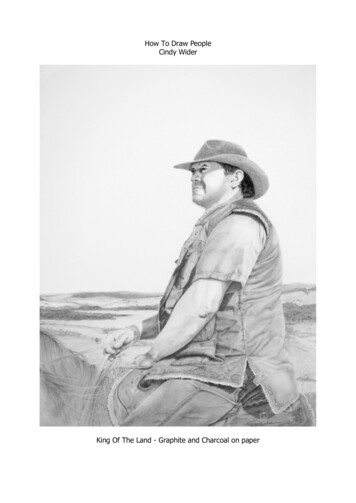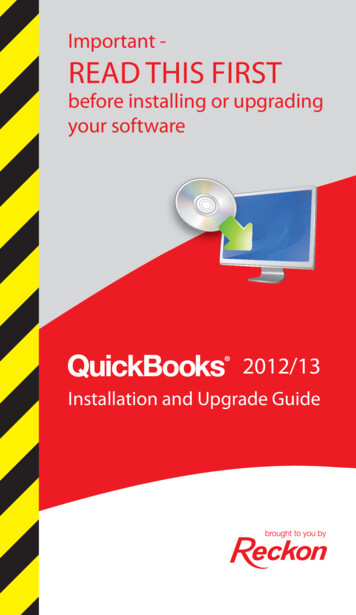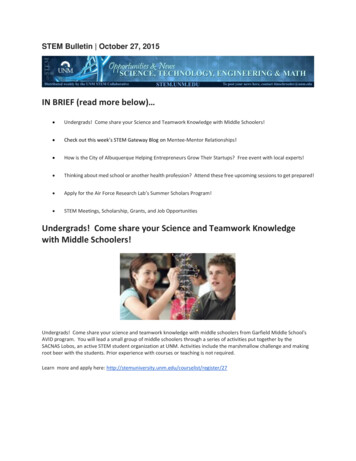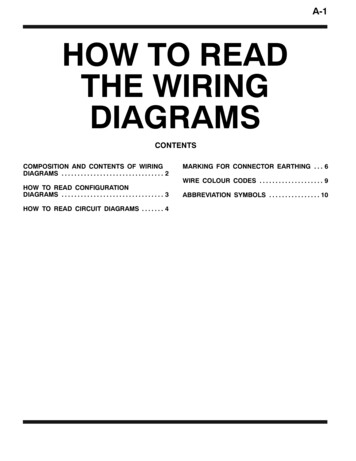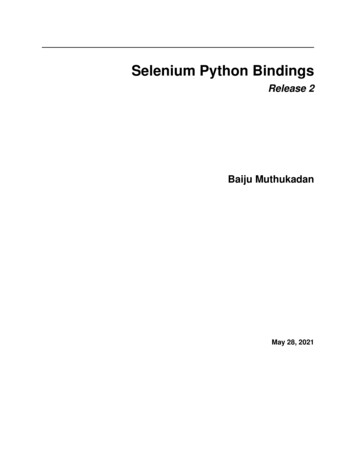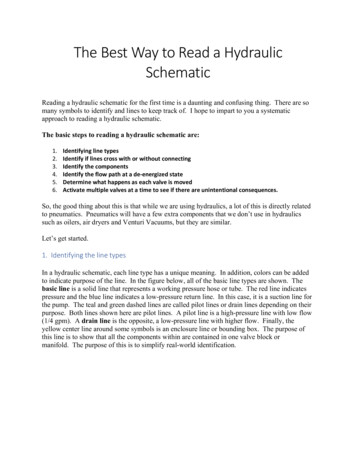
Transcription
The Best Way to Read a HydraulicSchematicReading a hydraulic schematic for the first time is a daunting and confusing thing. There are somany symbols to identify and lines to keep track of. I hope to impart to you a systematicapproach to reading a hydraulic schematic.The basic steps to reading a hydraulic schematic are:1.2.3.4.5.6.Identifying line typesIdentify if lines cross with or without connectingIdentify the componentsIdentify the flow path at a de-energized stateDetermine what happens as each valve is movedActivate multiple valves at a time to see if there are unintentional consequences.So, the good thing about this is that while we are using hydraulics, a lot of this is directly relatedto pneumatics. Pneumatics will have a few extra components that we don’t use in hydraulicssuch as oilers, air dryers and Venturi Vacuums, but they are similar.Let’s get started.1. Identifying the line typesIn a hydraulic schematic, each line type has a unique meaning. In addition, colors can be addedto indicate purpose of the line. In the figure below, all of the basic line types are shown. Thebasic line is a solid line that represents a working pressure hose or tube. The red line indicatespressure and the blue line indicates a low-pressure return line. In this case, it is a suction line forthe pump. The teal and green dashed lines are called pilot lines or drain lines depending on theirpurpose. Both lines shown here are pilot lines. A pilot line is a high-pressure line with low flow(1/4 gpm). A drain line is the opposite, a low-pressure line with higher flow. Finally, theyellow center line around some symbols is an enclosure line or bounding box. The purpose ofthis line is to show that all the components within are contained in one valve block ormanifold. The purpose of this is to simplify real-world identification.
The Best Way to Read a Hydraulic Schematic2. Identify if lines cross with or without connectingThere is a little controversy with this one. In the early days, if two lines crossed, they wereconnected. If you didn’t want the lines connected, you would draw a hump across one lineadding some drama to the schematic. Well, as more and more people heeded to the advice of theBlack Eyed Peas saying the, “you don’t need no drama, drama, no, no drama, drama” thestandards were changed. Now, you will need a dot to indicate crossed lines that are joined. Ifthere is no dot, there is no connection. Who knew that the Black Eyed Peas were actuallysinging about hydraulic schematics? Ok, so the song obviously doesn’t have anything to do withhydraulics. In all honesty, the change came because it was far easier to add a dot than to eraselines and make the hump. Personally, I like adding the hump and using the dot. With this, thereis no guessing as to what my intent was. A dot means that they are connected and a hump meansthey aren’t. Very clear to anyone reading the schematic. The figure below represents thisconcept.3. Identify the componentsIdentifying the components is the key to the whole process. If you understand what eachcomponent does, you can see more clearly how they will work together. Other lists of hydrauliccomponents usually just tell you what it is. This list will be different in that I will give hydraulic-schematic-with-examples/2
The Best Way to Read a Hydraulic Schematicinto the function and pros and cons of using each. Understand that this is in no way anexhaustive list and new components are being developed all the time.Flow ReducersIn every hydraulic system, you will have one function that requires full flow and another thatneeds much less flow. This is where flow reducers come in. The most basic type is an orificewhich is a hole drilled in what would otherwise be a plug. As you can imagine, there is a fixedamount of oil that can be pushed through the hole.OrificeNeedle ValveA needle valve is what you would want if you needed to adjust the flow. (Note the arrow foradjustment.) These components are good if you just need to limit the flow but don’t really careif you have bi-directional flow or overrunning loads. Let me explain. If you are using a needlevalve to limit the speed of a hydraulic motor, in theory you could put the valve on one portonly. However, you will notice that you will get vastly better performance rotating the motorone way. Going the other way, you will see jerks in rotation. The reason for this is friction inthe motor and the system it is driving. Granted, the average speed was what was desired, but theperformance was not. I would now like to describe two new terms, metering in and meteringout. Metering out is the method of metering the fluid coming out of a valve and going to themotor. This will give you poor performance because we are at the motor’s mercy for handlingfriction. Sometimes we may turn the motor at 500 psi, sometimes at 1200 psi. Who’s tosay? Metering in is the better solution. Metering in (into the valve that is) forces the outlet ofthe motor to maintain a constant pressure. The inlet pressure can still fluctuate wildly but aulic-schematic-with-examples/3
The Best Way to Read a Hydraulic Schematicmotor speed will remain steady. To accomplish a meter in on both sides of the motor, we can’tuse a needle valve anymore because the flow will be metered twice.Flow ControlAdjustable Flow ControlFlow control valves were developed to have unrestricted flow out of the valve and metered flowback into the valve. The check valve is what allows unrestricted or ‘free flow’. (Free flow isfrom bottom to top). These come in both adjustable and non-adjustable configurations. Onefinal thought is that these valves will build lots of heat especially with positive displacementpumps. You can minimize this by having a compensated flow control valve that will sendbypassed fluid to tank instead of building up pressure until the relief valve kicks in.Reservoirs (or Tanks)There are two types of tank schematics: pressurized and unpressurized. Unpressurized isdefinitely most prevalent in the market. One can infer that the pressurized tank is the one that d-a-hydraulic-schematic-with-examples/4
The Best Way to Read a Hydraulic SchematicWith a reservoir, you can also indicate if you want oil to be returned above (top) or below(bottom) the oil level in the tank. I’ll be honest, I don’t know why you would want oil returnedabove the oil level. Doing so tends to add air to the fluid (think about a fish tank). If too muchair gets into the suction line, you can potentially make your incompressible fluid a little morecompressible which leads to poor performance. The irony is that I almost always see theschematic indicate to return the oil above the oil level.Filters and Heat ManagementFluid FilterAll oil should be maintained by the system and filtration is a must. It is a diamond with a dashedline indicating that the fluid must flow through a screen of some kind. Many filters will alsohave a spring loaded check valve in parallel so that if the filter is clogged, oil will bypass throughthe check valve.Maintaining oil temperature is also essential. If the system is intended to be used in coldclimates, oil heaters (right) are a must. The arrows point into the symbol indicating the directionof heat flow.Heat a-hydraulic-schematic-with-examples/5
The Best Way to Read a Hydraulic SchematicTemperature Controlling SystemsA heat exchanger (above left) is used to reject heat from the system and the arrows pointout. There are also temperature controlling systems that can either reject or add heat. This isrepresented with one arrow pointing in and one pointing out. It is important to note that thesecan be turned on and off as needed so that only one or none is active.Pumps and MotorsPumps and motors are probably the most easily identifiable components on a schematic. This isalways the first component I look for because this is where the magic starts. Pumps will have thearrows pointing out indicating that fluid energy is flowing out from the pump. Hydraulic motorshave the arrows pointing in.If a pump is driven by an electric motor, it can be shown connected to it. The direction onrotation can be shown. Remember that the rotation direction shown here is clockwise whenlooking at the pump shaft, not the motor shaft. Both pumps and motors can be fixeddisplacement or variable displacement.Fixed Displacement Pump with draulic-schematic-with-examples/6
The Best Way to Read a Hydraulic SchematicVariable Displacement PumpVariable Displacement MotorOne cool thing is that you can actually have bi-directional pumps and motors. We can see whyyou would want a bi-directional motor, but why a pump? Bi-directional pumps are generallypaired directly with a motor in a closed hydraulic system. Instead of returning the used oil to thereservoir, it goes directly back to the pump. There are a lot of winch applications that use thistype of system.Bidirectional Variable Displacement PumpBidirectional Fixed Displacement draulic-schematic-with-examples/7
The Best Way to Read a Hydraulic SchematicAccumulatorsAccumulators are devices that store pressurized oil. This is prominent in systems that have avery high peak horsepower, but the duty cycle of that is low. A good example of this is the ‘TopThrill Dragster’ roller coaster at Cedar Point. (image courtesy of daveynin on Flickr). Lots ofpower is used in a few seconds to launch this car over the hill. However, the cars only launchevery 60 to 120 seconds so that whole time in between can be used to produce energy and store itin accumulators until needed. Accumulators come in two types, spring loaded (indicated by aspring) and gas charged.CylindersCylinders are linear actuators that can produce large forces in small volumes.There are generally three types represented in a schematic. A single acting cylinder is one wherehydraulic oil is only supplied to one side (usually the bore) and either gravity or springs make itreturn. A bottle jack is a good example of this.Single ydraulic-schematic-with-examples/8
The Best Way to Read a Hydraulic SchematicDouble acting cylinders are the most common, and pressure can be applied to either side to makethe cylinder extend or retract. Since the extend area and retract area a different on a doubleacting cylinder, you may get undesired performance. Double rodded cylinders are an answer tothis because the area is the same on each side of the piston.Double ActingDouble Acting Double RodPressure Controlling ValvesControlling pressure is essential in all hydraulic systems. Every system must have a relief valveto protect hydraulic and mechanical components. In this schematic symbol, the pressurized fluidis on the top side of the valve. If the pressure is high enough to overcome the spring, the arrowwill shift over and oil will flow through in this case, to the reservoir.However, we can change the ports a little and get different performance. Instead of having theoutput flow go to the reservoir, we can make it power something else say a motor. This is asequence valve. If I have a hydraulic drill press, when flow is turned on to the top side, perhapsI have a clamp that I want to engage first. I could connect the cylinder to the top side line andthe cylinder would clamp in order to build up pressure. It is only after enough pressure is builtthat the motor would draulic-schematic-with-examples/9
The Best Way to Read a Hydraulic SchematicA pressure reducing valve is also an important hydraulic component. A recent system Idesigned had one side operating at 3000 psi and another side operating at 400 psi. I incorporateda pressure reducing/relieving valve where the left port had the full system pressure of 3000psi. The right port was set to give me reduced pressure of 400 psi. If pressure in that line rose, itwould relieve that pressure to tank through the bottom port.Load Holding ValvesAny load holding valve will be based on some form of a check valve. A check valve will allowflow to move easily in one direction, but not in the other. This is great .if we want to hold theload forever. Often that is not the case, so we need a method of bypassing flow.The pilot to open check valve, commonly referred to as a PO Check, is used to unseat thepoppet. (Spoiler alert: check valves don’t use balls because they are super difficult to make anddon’t seal well. A poppet is a segment of a cone shape that seals much better.) Generally, if adirectional valve uses work port A to lift a load, work port B is used to lower the load and unseatthe PO check ydraulic-schematic-with-examples/10
The Best Way to Read a Hydraulic SchematicIf both directions need to be locked, you can use a double PO check valve. This is a manifoldthat combines two PO check valves and simplifies the external plumbing needed byincorporating the cross pilot lines.Counterbalance ValvesThere is one major downside to using a PO check valve: Temperature. If your need is to haveload holding in both directions, a PO check can actually create extremely largepressures. Imagine the situation of setting up a device under load early in the morning. Theload and position don’t change all day, but the temperature gets 30 to 40 warmer. The oil willexpand creating pressures that can exceed the motor or cylinder’s capabilities. It is a badsituation. Luckily, a counterbalance valve comes to our rescue. A counterbalance valve allowsfree flow into the motor or cylinder through a check valve, but there is a specialized relief valveon the way out. If the pressure in the cylinder is too
Schematic Reading a hydraulic schematic for the first time is a daunting and confusing thing. There are so many symbols to identify and lines to keep track of. I hope to impart to you a systematic approach to reading a hydraulic schematic. The basic steps to reading a hydraulic schematic are: 1. Identifying line types 2. Identify if lines cross with or without connecting 3. Identify the .


